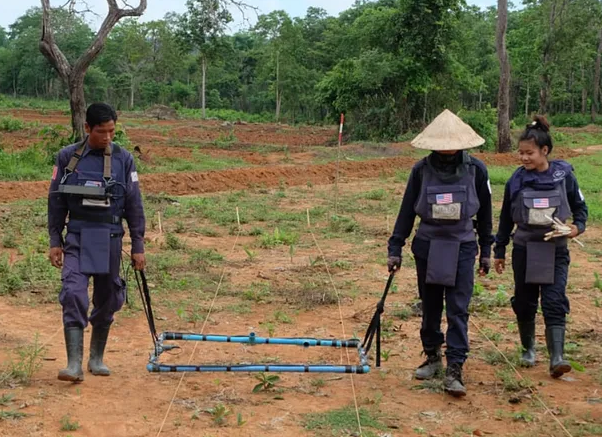
WRITE OR WRONG
Write spelled like this is referring to authorship. Wrong could be defined as something immoral. This story was written to help in righting some morally wrong actions.
What is a cluster bomb? “There are a wide variety of types of cluster munitions. According to the Cluster Munition Monitor, a total of 34 states have at one time developed or produced over 200 types of cluster munitions”. Both Russia and Ukraine are now deploying thousands of these weapons in their trench war battles.
My concerns are about the ones that fail to detonate and can actively lie for decades, becoming a danger to the civilians long after the end of the war. Russian cluster munitions are said to have a 30 percent failure rate, this is about the same failure rate of the cluster bombs we dropped on the country of Laos during our “secret war”.
As a resident here in Lao while working on a charitable school improvement project, I’ve learned of the tragic circumstances of cluster bombs. Five decades after the end of our war against North Viet Nam, Lao citizens are still in danger from the unexploded ordinance. These bombs we dropped (illegally) along the Ho Chi Minh trail, which is mostly in the country of Laos. From 1964 to 1973, the U.S. dropped more than two million tons of ordnance on Lao. More than 580,000 bombing missions, equal to a plane load of bombs every eight minutes, 24 hours a day for nine years. This made Laos the most heavily bombed country in history, equaling the total amount of bombs dropped by both sides in World War II. The bombings were part of the U.S. Secret War to support the Royal Lao Government against the Pathet Lao and to interdict traffic along the Ho Chi Minh Trail. The bombings destroyed many villages. and displaced hundreds of thousands of Lao civilians during the nine year period.

The small explosive devices released from cluster bombs, are designed to explode on impact, cluster munitions have a significant failure rate. They are usually the size of an orange or soup can and can stay buried in the ground indefinitely. Cluster munitions continue to kill villagers and prevent the redevelopment of bombed land. Over the past five decades, fewer than one million of the estimated 80 million cluster munitions that failed to detonate have been cleared. It was estimated that it could take 200 years to clear the countryside.
There is new hope on the horizon, in addition to the trained sniffer dogs and metal detectors (which also locate expended bomb shrapnel), trained hero rats are now able to detect the TNT of live bombs.